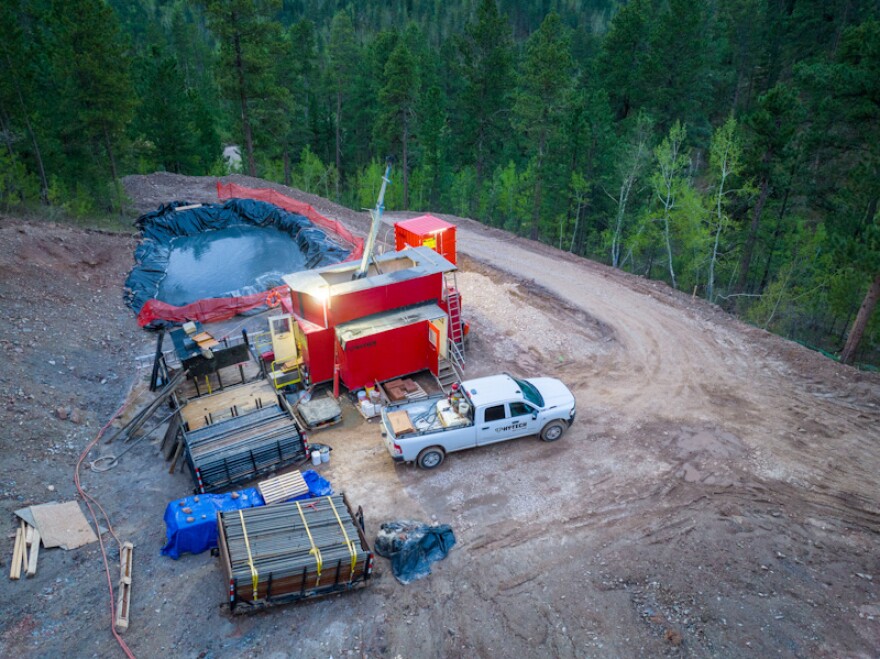A company exploring for gold in the northern Black Hills has attracted millions of dollars from investors and plans to add hundreds of new test holes to its exploration program.
The company is Dakota Gold, which has offices in Lead and Canada. The company went public on the New York Stock Exchange in April.
Chief Operating Officer Jerry Aberle said the company is emulating the late George Hearst, who scooped up land and mining rights in the 1800s to create the Homestake mining empire in Lead.
“There’s so much gold in this small area, that to consolidate the district was power," Aberle said.
He made those comments during a May meeting with potential investors in Rapid City. At that same meeting, Dakota Gold President Jonathan Awde said the company had raised $75 million over the preceding two years. And he said the company is now the largest landowner in the northern Black Hills, with control of 45,000 acres.
The company is drilling deep holes for core samples, which it will study to determine the potential for a mine. The company already has an approved plan for 85 holes in an area 3 miles north of Lead. Now the company plans to drill up to 260 more holes in an area 2 miles northwest of Lead.
No permit is needed to conduct exploratory drilling on private land in South Dakota. A company only needs to file a notice of its intent to drill. State regulators can impose restrictions on the drilling to protect natural resources, such as requiring holes to be plugged and mandating that drilling areas be returned to natural-looking conditions.

Aberle worked for the Homestake gold mine before it closed 20 years ago. At the investor meeting in May, he said Dakota Gold wants to revitalize the Homestake mining district.
“We’re working with local landowners and stakeholders at all levels of this thing to try and make this thing make sense for everybody up in the northern Black Hills, and Black Hills in general," Aberle said.
There’s currently only one active, large-scale gold mine in the Black Hills — the Wharf Mine near Lead. But exploratory drilling is booming. Dakota Gold is one of several companies conducting or planning drilling projects in the region.
Other projects, including Minneapolis-based F3 Gold's exploration near the Pactola Reservoir, have faced criticism from people worried that future mines could pollute Black Hills waterways. Mining has been continuous in the Black Hills since the 1870s, producing jobs and wealth. But it's also caused environmental damage.
Whitewood Creek in the northern Black Hills was formerly so polluted with thick, gray sludge and chemicals that the creek was known as "Cyanide Creek." Homestake cleaned up the creek after the passage of federal environmental laws in the 1970s.
The former Gilt Edge Mine, about 5 miles southeast of Lead, has been undergoing reclamation as an Environmental Protection Agency Superfund site since 2000. The company that owned the mine, Brohm, went bankrupt in 1999 and left behind 150 million gallons of acidic water that was laden with contaminants including arsenic and lead.





